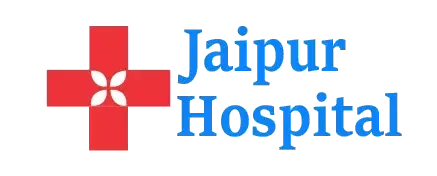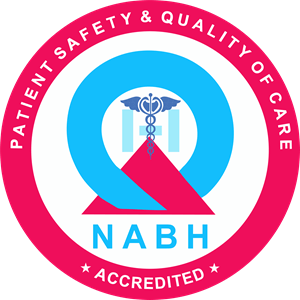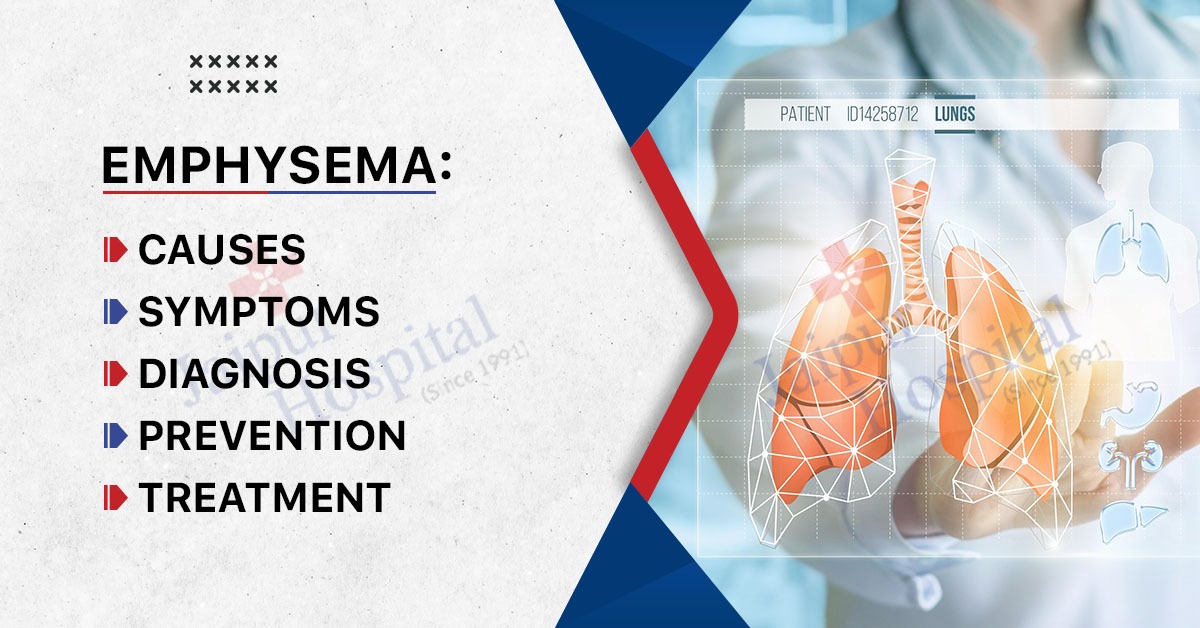Lung illness called emphysema. Smoking is the primary cause of emphysema, although there are other reasons as well, such as air pollution and chemical fumes. Shortness of breath, coughing, and exhaustion are symptoms. Imaging and breathing tests can be used to identify emphysema in your healthcare provider. Both stopping smoking and taking medicine are part of the treatment.
What is Emphysema?
emphysema has a kind called COPD (chronic obstructive pulmonary disease). A collection of lung conditions known as COPD make it difficult to breathe and worsen with time. Chronic bronchitis is the second most common kind of COPD. A majority of patients with COPD suffer from chronic bronchitis and emphysema, but the severity of each condition varies from patient to patient. In your lungs, emphysema affects the air sacs. These sacs are typically elastic or stretchy. Each air sac in your body expands like a little balloon as you inhale. The air sacs collapse when you exhale, and the air escapes.
The lungs’ interstitial walls of many air sacs are harmed in emphysema. The air sacs become floppy as a result and lose their form. In addition to causing harm, the air sacs’ walls may be destroyed, resulting in fewer, larger air sacs as opposed to many, microscopic ones. Your lungs have a tougher time removing carbon dioxide from your body and bringing in oxygen as a result.
You Can Read Also:-Pink eye (Conjunctivitis) – Symptoms, Diagnosis, Causes, Treatment, and Prevention
What are the symptoms of Emphysema?
Emphysema can exist for years without any obvious symptoms or indicators. proper up arrow In many instances, symptoms are not noticed until they begin to interfere with daily activities. Emphysema signs and symptoms include:
- breathing problems, especially after exercising lightly or ascending stairs
- smoker’s cough, or persistent cough
- wheezing
- increased mucus generation
- Having a tight chest
- ongoing sensation of not getting enough oxygen
- respiratory infections that are common
- persistent fatigue
Causes of Emphysema:
Emphysema is mostly brought on by smoking. Smoking cigarettes damages lung tissue and irritates the airways. Your cilia are harmed by cigarette smoke, which also causes inflammation. Swollen airways, mucus production, and difficulty clearing your airways are all symptoms of irritation and damaged cilia. Breathing difficulties may result from any of these changes.
Emphysema has several causes, although smoking is the primary one. These comprise:
- Air pollution.
- Marijuana
- Vaping and e-cigarettes.
- Cigar smoke.
- Chemical fumes.
Risk Factors of Emphysema:
Your risk of acquiring emphysema is influenced by the following factors:
- Smokers of cigars, cigarettes, and pipes are also prone to developing emphysema, although cigarette smokers are more likely to do so. The risk rises with time and tobacco consumption for all categories of smokers.
- The majority of people with tobacco-related emphysema first experience symptoms of the disease between the ages of 40 and 60, despite the fact that the lung damage that occurs in emphysema develops gradually.
- Exposure to secondhand smoke. Secondhand smoke, also referred to as passive or environmental tobacco smoke, is smoke from another person’s cigarette, pipe, or cigar that you unintentionally breathe in. Your risk of developing emphysema increases when secondhand smoke is present.
- Exposure to dust or fumes. You’re more likely to develop emphysema if you breathe fumes from specific chemicals or dust from grain, cotton, wood, or mining products. Smoking increases the risk even further.
- Exposure to indoor and outdoor pollution. You run a higher risk of developing emphysema if you breathe both indoor and outdoor pollutants, such as car exhaust and fumes from heating fuel.
How is Emphysema Diagnosed?
The doctor performs a physical examination and obtains a thorough medical history of the patient and their family members before making the emphysema diagnosis. Tests to diagnose emphysema may be carried out if these point to that conclusion.
Emphysema is diagnosed through the following tests:
- Blood tests. Blood tests can be used to diagnose alpha-1-antitrypsin deficiency and rule out other illnesses. The arterial blood gas test measures the blood’s levels of carbon dioxide and oxygen and can be used to assess whether oxygen therapy is required.
- Imaging tests. Emphysema can be distinguished from other types of lung disease by the lung damage that can be seen on a chest x-ray or CT scan.
- To measure the amount of oxygen (O2) in the blood, a pulse oximeter is a piece of electronic equipment that is attached to a body part, such as a fingertip, earlobe, or forehead.
- Pulmonary function tests. Measurement of lung air flow and evaluation of lung function are done using pulmonary function tests (PFTs). To assess lung function and capacity, tests for lung volume may also be carried out.
You Can Read Also:- Black Teeth: Causes, Symptoms, and Treatment
Complications of Emphysema:
Emphysema patients are more likely to experience a variety of complications, some of which can be fatal. The following list of emphysema complications includes some of the most typical cases:
- Failure or insufficiency of the respiratory system
- Pneumonia
- Cor pulmonale
- Interstitial emphysema
- Pneumothorax
- Chronic atelectasis
- Respiratory tract infections that recur frequently
- Hypoxia, coma, and respiratory acidosis
When to see a doctor?
Consult a medical professional if you’ve experienced unexplained shortness of breath for a while, especially if it’s getting worse or interfering with your daily activities. Don’t brush it off by telling yourself it’s just part of getting older or being out of shape. Immediately seek medical help if
- Your breathing is so labored that climbing stairs is impossible.
- With effort, your lips or fingernails turn blue or gray.
- You aren’t mentally sharp.
Treatment of Emphysema:
The symptoms of COPD can be lessened and the disease’s progression can be slowed down by quitting smoking and receiving treatment. Emphysema treatment options may cover the following:
- Bronchodilator medications. These medications are delivered using portable inhalers and occasionally a device known as a nebulizer. They ease the muscles that surround the airways.
- Anti-inflammatory medication. Inflammation in the airways is reduced by these drugs.
- Oxygen therapy. Patients with hypoxemia—a condition where the blood does not receive enough oxygen from the lungs—are prescribed this.
- Lung volume reduction surgery. This entails cutting out a section of the sick lung tissue and then fusing the healthy tissue together. Although only a small percentage of patients are candidates for this procedure, it can help relieve pressure on the breathing muscles and improve lung elasticity and gas exchange.
- Pulmonary rehabilitation. Pulmonary rehabilitation programs are individualized treatment plans that offer COPD-specific exercise, breathing, and nutrition advice. These programs’ main objective is to support your continued physical activity and day-to-day activities.
How can Emphysema be prevented?
You can use a variety of at-home treatments to shield yourself from Emphysema’s effects. As follows:
Exercising regularly:
Regular exercise significantly expands your lung capacity and maintains your health. Exercise causes exertion, which causes each air pocket to grasp more air, keeping the lower air pockets in the lungs active and preventing them from going dormant.
Avoid smoking:
One of the main causes of Emphysema in patients is smoking cigarettes, marijuana, or breathing in secondhand smoke. A person’s susceptibility to this condition is decreased by quitting smoking.
Cold Air:
Breathing in cold air is challenging because it causes the lungs to spasm. When the air gets colder, breathing becomes easier if you cover your face with a mask or scarf.
Air pollutants:
Symptoms of COPD are caused by chemical pollutants. The most vulnerable populations are those who reside in or close to industrial areas and chemical refineries. You can prevent this by donning filtered masks and using a scarf to cover your nose.
Vaccinations:
Immunization against diseases linked to the flu can lessen the effects of any bacterial or viral infections.





















 Disclaimer: The information on the Web Site is provided for informational purposes only and is not meant to substitute the advice provided by our doctor or other health care professional. You should not use the information available on or through the Web Site for treating a health problem or disease or prescribing any medication. All images used on this website are for illustrative purposes only,
Disclaimer: The information on the Web Site is provided for informational purposes only and is not meant to substitute the advice provided by our doctor or other health care professional. You should not use the information available on or through the Web Site for treating a health problem or disease or prescribing any medication. All images used on this website are for illustrative purposes only,